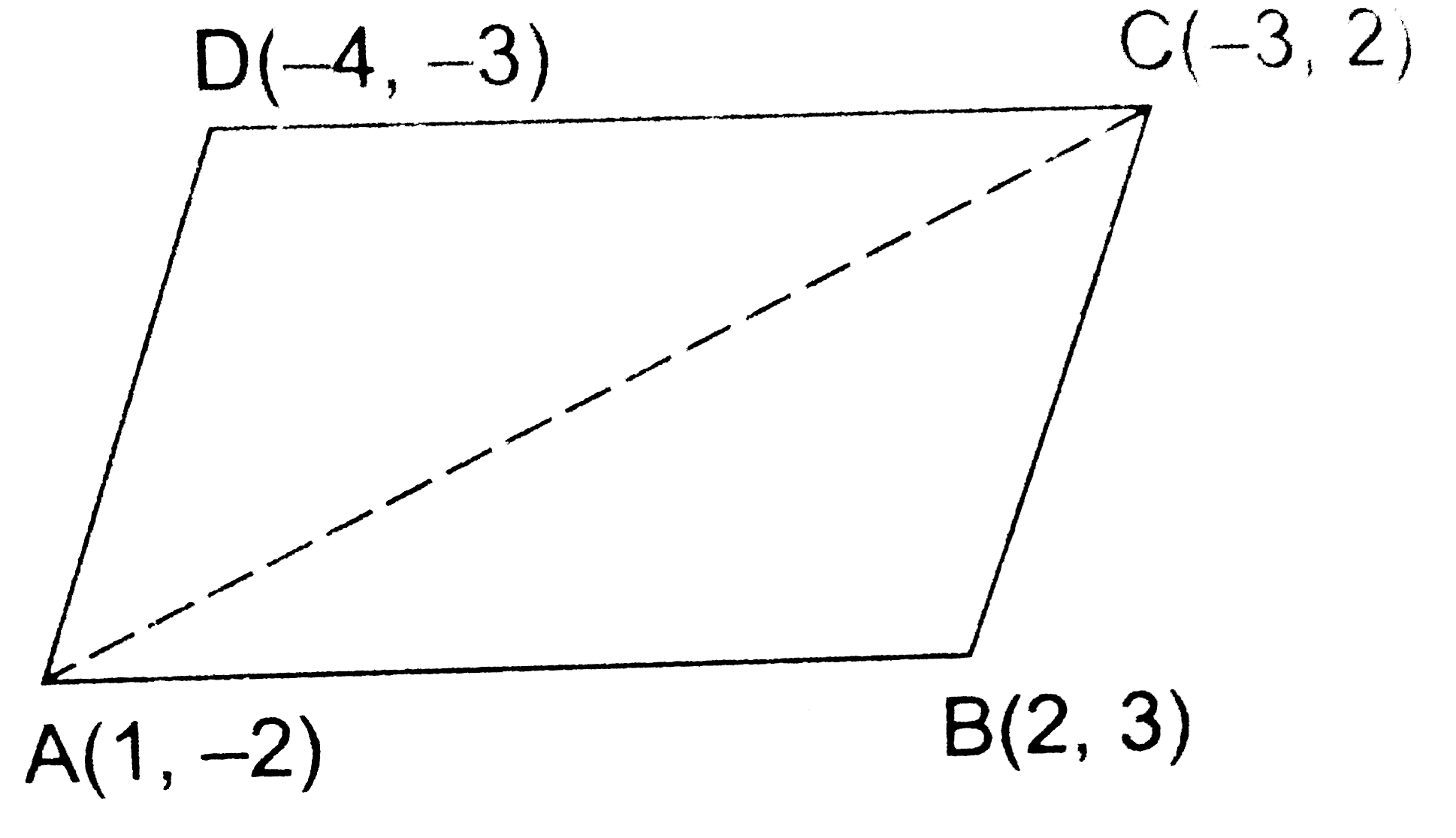If the points A(1, −2), B(2, 3), C(−3, 2) and D(−4, −3) are the vertices of parallelogram ABCD , then taking AB as the base, find the height of the parallelogram.
Let A(1, -2), B(2, 3), C(-3, 2) and D(-4, -3) be the vertices of the given llgm ABCD. Join AC. Then,
ar(llgm ABCD)=2×ar(ΔABC).

In ΔABC, we have
(x1=1,y1=−2),(x2=2,y2=3) and (x3=−3,y3=2)
∴ar(ΔABC)=12|x1(y2−y3)+x2(y3−y1)+x3(y1−y2)|
=12|1⋅(3−2)+2⋅(2+2)−3⋅(−2−3)|
=12|1+8+15|=12 sq units.
∴ar(llgm ABCD)=2×ar(ΔABC)=2×12=24 sq units.
Base AB = √(2−1)2+(3+2)2=√12+52=√26 units.
Let h be the height of the llgm ABCD. Then,
ar(llgm ABCD) = (base×height)=(√26×h) sq units.
∴√26×h=24⇒h={24√26×√26√26}=(2426×√26) units
⇒h=(1213×5.09)=61.0813=4.69 units.
Hence, the height of the parallelogram is 4.69 units.
Topper's Solved these Questions
- COORDINATE GEOMETRYBOOK - RS AGGARWALCHAPTER - COORDINATE GEOMETRYEXERCISE - Exercise 6A
34 Videos
- COORDINATE GEOMETRYBOOK - RS AGGARWALCHAPTER - COORDINATE GEOMETRYEXERCISE - Exercise 6B
38 Videos
- CONSTRUCTIONSBOOK - RS AGGARWALCHAPTER - CONSTRUCTIONSEXERCISE - Test Yourself
10 Videos
- HEIGHTS AND DISTANCESBOOK - RS AGGARWALCHAPTER - HEIGHTS AND DISTANCESEXERCISE - Multiple Choice Questions (Mcq)
25 Videos
Similar Questions
Knowledge Check
The points A(4,5,10),B(2,3,4)andC(1,2,−1) are three vertices of a parallelogram ABCD, then
AVector equation of AB is 2i+3j+4k+λ(i+j+3k)BCartesian equation of BC is x−21=y−31=z−4−5CCoordinate of D are (3,4,5)DABCD is a rectangle.
If the points A(a, -10), B(6, b), C (3, 16), D (2, -1) are the vertices of a parallelogram ABCD, find the values of a and b.
View SolutionShow that the points A(2, -1), B(3, 4), C(-2, 3) and D(-3, -2) are the vertices of a rhombus.
View SolutionShow that the points A(1,2),B(4,3),C(1,0) and D(-2,-1) are the vertices of a parallelogram.
View SolutionTo show that A( -4,-2) ,B (-3,-7) ,C(3,-2) and D (2,3) are the vertices of a parallelogram
View SolutionShow that the points A(1,2,3), B(−1,−2,−1), C(2,3,2)and D(4,7,6) are the vertices of a parallelogram ABCD but not a rectangle.
View SolutionIf the points A(a, −11), B(5, b), C(2, 15) and D(1, 1) are the vertices of a parallelogram ABCD , find the values of a and b .
View SolutionShow that the points A(,1,2,3),B(−1,−2,−1),C(2,3,2)andD(4,7,6) are the vertices of a parallelogram ABCD but it is not a rectangle.
View Solution
